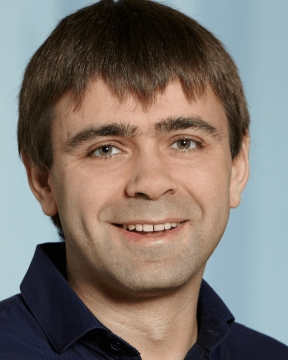 |
Dr. Maksym KovalenkoETH ZurichEngineering Perovskite Nanocrystals As Quantum Light Sources Kanatzidis International Symposium (4th Intl. Symp. on Materials/Solid State Chemistry and Nanoscience for Sustainable Development) Back to Plenary Lectures » |
Abstract:LHP NCs are of broad interest as classical light sources (LED/LCD displays) and quantum light sources (quantum sensing and imaging, quantum communication, optical quantum computing). The surface-functionalization of such labile ionic materials poses a formidable challenge, which we address with the library of designer phospholipid capping ligands [1]. Lattice-matched primary-ammonium phospholipids enhance the structural and colloidal integrity of hybrid organic–inorganic NCs [FAPbBr3 and MAPbBr3 (FA, formamidinium; MA, methylammonium)] and lead-free metal halide NCs. The molecular structure of the organic ligand tail governs the long-term colloidal stability and compatibility with solvents of diverse polarity, from hydrocarbons to alcohols. These NCs exhibit photoluminescence (PL) quantum yield of more than 96% in solution and solids, as well as hours-long stability at a single-particle level, with minimal PL intermittency, as well as bright and high-purity (about 95%) single-photon emission. The brightness of such a quantum emitter is ultimately described by Fermi’s golden rule, where a radiative rate proportional to its oscillator strength (intrinsic emitter property) and the local density of photonic states (photonic engineering, i.e. cavity). With perovskite NCs, we present a record-low sub-100 ps radiative decay time for CsPb(Br/Cl)3 NCs by the NC size increase to 30 nm, owing to the giant oscillator strength [2]. Notably, the fast radiative rate is achieved along with the single-photon emission. When such bright and coherent QDs are assembled into superlattices, collective properties emerge, such as superradiant emission from the inter-NC coupling [3]. In the most recent work [4], we present the formation of multicomponent SLs made from the CsPbBr3 NCs of two different sizes. The diversity of obtained SLs encompassed the binary ABO6-, ABO3-, and NaCl-type structures, all of which contained orientationally and positionally confined NCs. We observed efficient NC coupling and Förster-like energy transfer from strongly confined 5.3 nm CsPbBr3 NCs to weakly confined 17.6 nm CsPbBr3 NCs. Exciton spatiotemporal dynamics measurements reveal that binary SLs exhibit enhanced exciton diffusivity compared to one-component SLs. |
|